
BACKGROUND:
Gregg Deal is a lifetime activist and artist who has embedded his passions and work into indigenous pop culture. He has touched on many issues concerning stereotypes and racial relations. He displays this through the productions of his many performances, the creation of his murals, film making, as well as activism simply through his spoken word.
INTRODUCTION:
Gregg Deal is an artist and activist. Son of a Caucasian father and native American mother. Gregg works to preserve indigenous identity through art. He also fights injustices and stereotypes with powerful performances that highlight systemic discrimination.
INDIAN PEDIGREE
Indigenous people in the United States are seldom talked about on political platforms, therefore remain vastly ignored regarding social issues that the Indigenous nations face, some of which are caused by the U.S. government. Artist Gregg Deal seeks to highlight some of those issues doing what he does best: Art. Deal has achieved notoriety with his performances that well-capture the essence of those issues and make them widely known so people can be conscious of them.
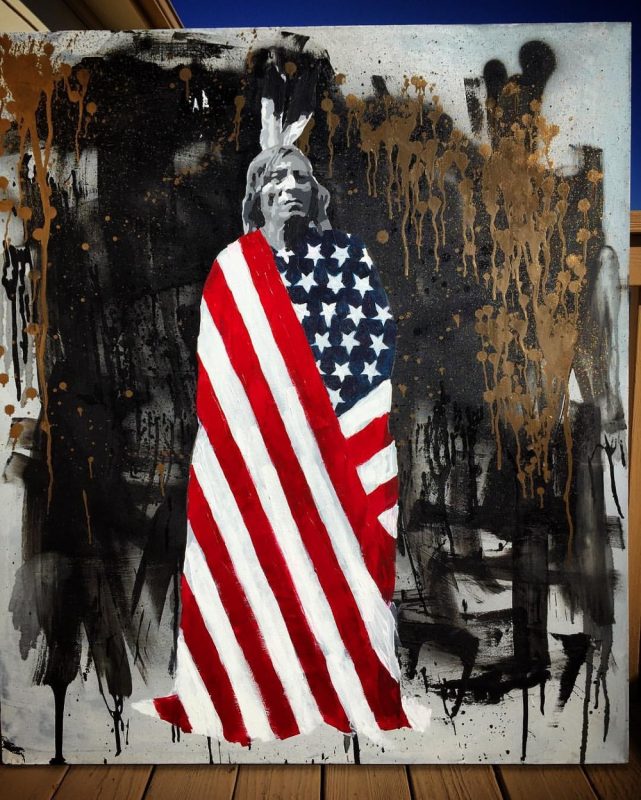
How do we begin to understand Indigenous culture in the US and its issues? We must begin by understanding what it currently means to be Indigenous or Indian in the United States. Deal explains through a powerful performance, how Indigenous people are categorized by the US Federal Government. His performance Indian Pedigree which was performed at the Denver Art Museum, brings out this issue as a high concern.
In his performance, Deal explains how Indigenous people in the US are tracked by bloodlines by the Federal Government. This tracking system, called “blood quantum,” is used to determine enrollment to specific Indigenous communities and stays on record. This way of tracking would not be acceptable to impose on other ethnic groups, as Deal mentions, “On Thursday, November 19, 2020, then Presidential candidate Trump openly suggested an ethnic database to track Muslims…the majority of Americans were horrified at the prospect of such a database.”(Deal). As he explains, a lot of people living in the US do not know that such an ethnic tracking database has existed in the US since the 1800s, and that each indigenous person has a Federal ID number in addition to the mandated Social Security number Deal poignantly notes: “Only dogs, and horses are tracked in a similar way.” (Deal, Indian pedigree performance).
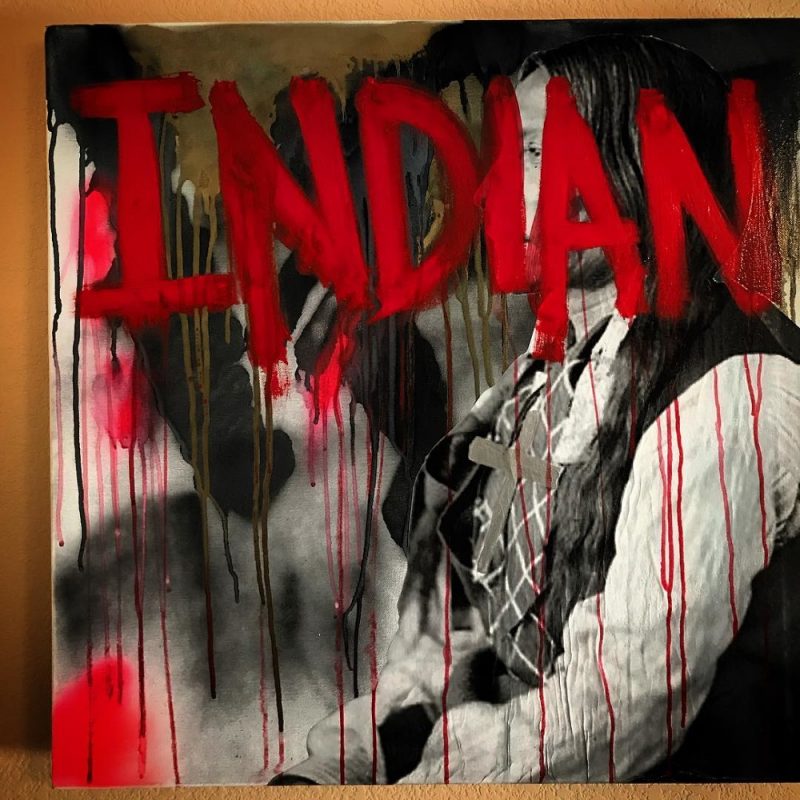
Deal’s performance shows him sitting on a chair as his indigenous roots are spoken out loud and while he gets those words tattooed on his arm, as a perpetual reminder of how much indigenous traces are in his blood. This blood-tracking system can serve as a system for culture annihilation, where “Indian-ness” will be “obsolete in one to 2 generation cycles,” yells the spokeswoman in the performance, which means that his descendants will not be eligible to enroll on any tribe, and the children of his children will be considered white without being able to claim their Indigenous heritage.
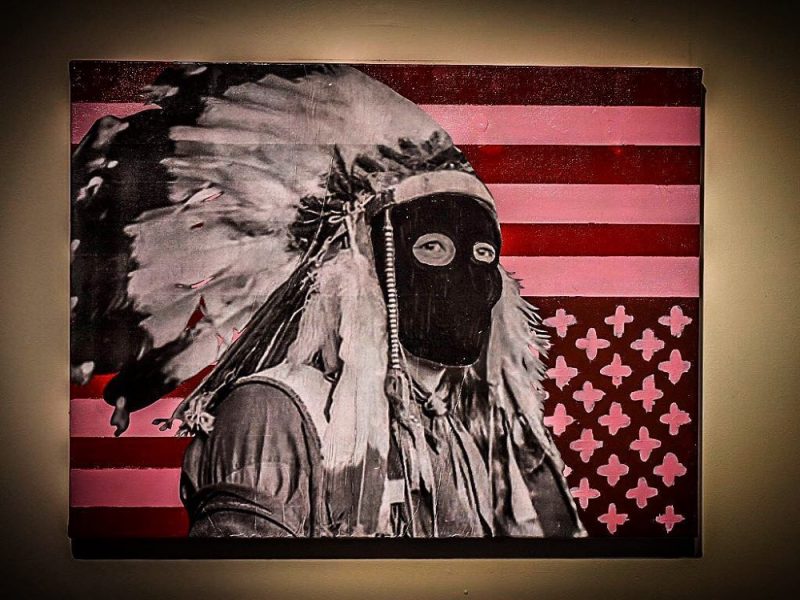
This performance is so powerful in many ways. First, underlines the horrifying fact that such a system is still in place today; the majority of the US population thought it was inadmissible to create a tracking system for Muslims in the US, but are unaware of the fact of this “blood quantum” system used for Indigenous people. This performance opens the doors to understanding how these native groups in the US have been tracked and conditioned for so long, and the way this system can be used to deny indigenous people their rights to be called Indigenous based on this government system of measuring their amount of ancestral Indigenous blood. Deal is emotional in this performance and can barely hold tears while reading from his notes (and rightfully so), reading how this system, which is only otherwise used on horses and dogs, will be a way of annihilating what is left of Indigenous culture in the US.
Supreme Law Of The Land
In his performance, Supreme Law of The Land Gregg portrays the actions of the US government and the oil Corporations towards Indigenous people in the US, and specifically the Standing Rock Sioux Tribe. Deal uses the American flag to represent the land in his work, and his act of cutting the flag reflects how the land was being stolen from right under the feet of the Standing Rock Sioux Tribe.
Deal starts this performance by reading out Article 6 section 2 of the constitution of the US. This Article states that the treaties made in this country that address a piece of land stand as the supreme law of the land, and implies that no entity within this country is entitled to break these laws. He transitions to the Fort Laramie Treaty of 1851 which gave rights and permissions to some tribes, including the Standing Rock Sioux Tribe, to a piece of land. Through this statement, Deal points out the discrepancies between the Laws and rules of the constitution and their lack of enforcement as they were broken by the Keystone pipeline along with the actions of the US government.
Towards the end of the performance, Deal is covered in oil by two men in business suits, who represent the US government, to depict figuratively what the Keystone pipeline did to the Indigenous people. Would it be considered civilized and fair if a stranger were to intrude into your house and start drawing on your wall, using it, and abusing it to their fullest capabilities? This is similar to what the US government did in terms of taking away Indigenous land and ruining it. Even though there were plenty of protests against the pipeline, it was still built on the sacred land of the indigenous people. Even after most of their land was taken from them, the U.S. government could not leave the little land the Indigenous people had left without polluting it with their ideals. Indigenous believed in kinship, the relationship between all beings, the sacredness of life, and respect for nature. Even though America disrespected most of their values, in this exhibition Deal focuses on the connection between the indigenous, their land, the violation of the constitution, and the ongoing disrespect they have endured.
The Last American Indian On Earth

Deal’s performance The Last American Indian On Earth served as an experiment for how people would react to him dressing up as a stereotype of a Native American Indian in public. In the 1900s an American photographer, Edward S. Curtis wanted to make memorable photos of native americans and dressed them up which came to be the stereotypes for them. Edward had a gift of photography and used it to investigate the Indians in the Seattle Waterfront. During his performance, Gregg experienced the feeling of dehumanization while an old lady doesn’t believe that he is in fact a human being. Deal’s work also highlighted the issue of the Washington football team mascot and spoke up about its stereotyping of Native Americans as a kind of a racial slur. An image can really affect one’s being by influencing how Native Americans are supposed to be dressed and act like “to be considered indigenous.” In his work, Deal wanted to shed light on finding one’s identity, especially being indigenous, and help his four kids grow up in this society.
An article from The Washington Post: “The Last American Indian”
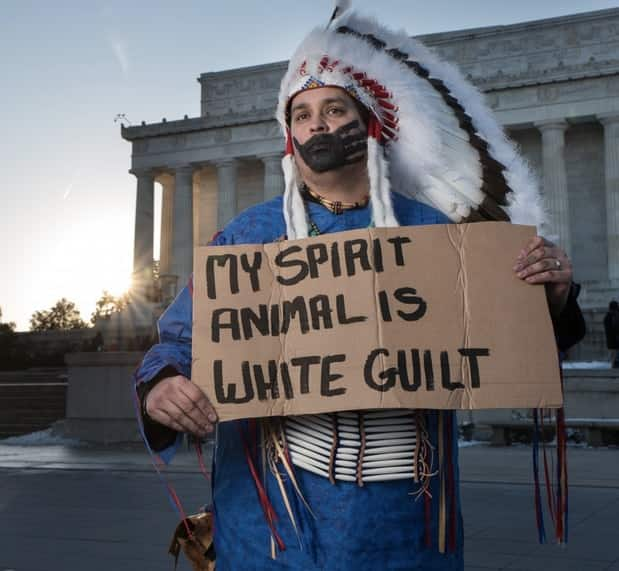
According to the artist, the picture that The Washington Post journalists took of his work “The Last American Indian on Earth” was not even related to his performance and they just made up an article about his work. Deal’s work hopes to explore how people reacted and how they “consumed the information” of the costume he wears for his performance. Proving his point, the journalist from the Washington Post imposed their own point of view onto the work rather than asking for the artist’s intentions. The funny part is during the process of the project, the person who was helping Deal with filming and taking photos to document the performance did the same thing. He gathered the videos and made it into his own film as his way of explaining Deal’s side of the story. Right now indigenous people are facing their land being taken away and used for industrial purposes. Deal feels that the ways in which the filmmaker took all the videos and photos to create a story without him as a similar sense of stealing his story and voice.
Modern Indigenous Living
displayed at the Arts Students League of Denver. October, 2020
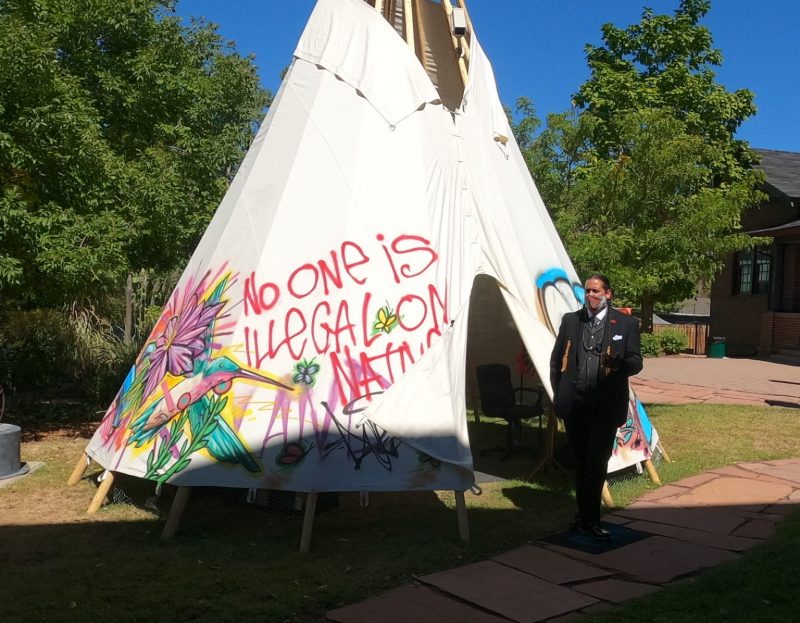
In this installation and performance piece, “Modern Indigenous Living”, Gregg Deal displays how it feels to be an indigenous person living in modern America. Deal describes this piece as wanting to shed light on some things, wanting to make fun of some things, and trying to show the audience his experience living in post-colonial times. He uses stereotypes, like the tipi, his long hair, and the tribal patterns to make sure people understand where he is coming from. To put a modern twist on it, there is graffiti on the tipi, a surveillance camera, and a doormat. Graffitied on the tipi, there is a saying, “No one is illegal on native land”. Inside the tipi, you will find things that you see in everyday modern houses. A bookshelf, bed, desk, technology such as a laptop, and many other things you can probably find in your home today. There is a lot of artwork seen throughout the room, and a carved wooden piece that says, “We may live on stolen land but that does not give you the right to steal my stuff.” Deal adds tribal prints all around the room and shows a headdress hanging in the room like a coat. During his performance, he wears a suit, with his hair, long and braided. During the performance, he plays the song, “Nervous Breakdown” by the Black Flags and he also takes out a pair of scissors and cuts his braids off. The band, Black Flags that Deal uses in his performance was known and popularized for being the “opposition” or outcasts. It depicts the feeling Deal gets by being a modern indigenous person living in America, it could feel outlandish. The way he cuts his hair also has a meaning beneath it. He is trying to tell the audience to break stereotypes put on indigenous people. They should not have to look or act a certain way to prove to themselves or society that they are in fact indegionous.
The Duality Of Indigeneity
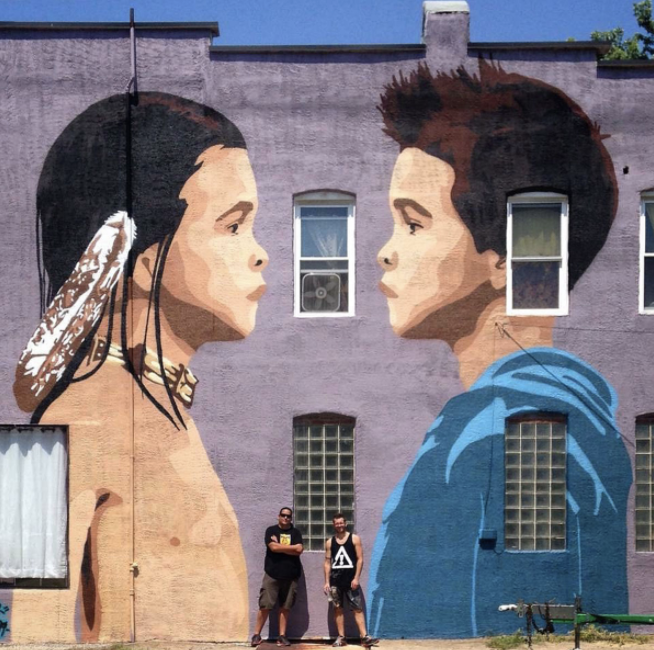
The large-scale mural Duality of Indigeneity painted by the artist Gregg Deal is a wonderful and powerful piece. It is located in Baltimore created right after the death of Freddy Gray in 2015. During this time, the city erupted into important conversations about the identity and traditions of the neighborhood.
The neighborhoods in Baltimore are integrated, but they are also very segregated through people being grouped into areas in relation to their nationalities and ethnic backgrounds. This process leads to the lack of diversity in certain areas with a population-dense with a certain nationality or ethnic group. Gregg Deal created murals of Native American culture duality in several places in Baltimore. To show people who the original inhabitants were. This art aims to challenge the type of perception of Native Americans’ identity in terms of being American and being Native.
Savage
This artwork (Savage) has a lot of rich visual contexts that strikes the viewer at first glance. The initial thing I noticed is the caucasian child wearing a Native American headdress, which is derogatory, as in the picture it looks like he is making fun of the Native Americans in the work while wearing it. He is not respecting the fact that the headdress is part of a culture. Deal displays a kid who uses his hands and voice to make fun of the native American cultural practices. In 1942, Christopher Columbus, or European colonists, first arrived in the Americas and they killed many Native Americans to take their land by weapons and armed forces. Yet, people continue to celebrate Columbus Day even while it symbolizes the start of the mass killings of and disenfranchisement of Native Americans. This work shows how people have been trained to acknowledge history, and perceive Native Americans as a people to make fun of rather than to give credit to as the original dwellers of the land one talks about how native Americans suffered and lost their lives protecting their land.
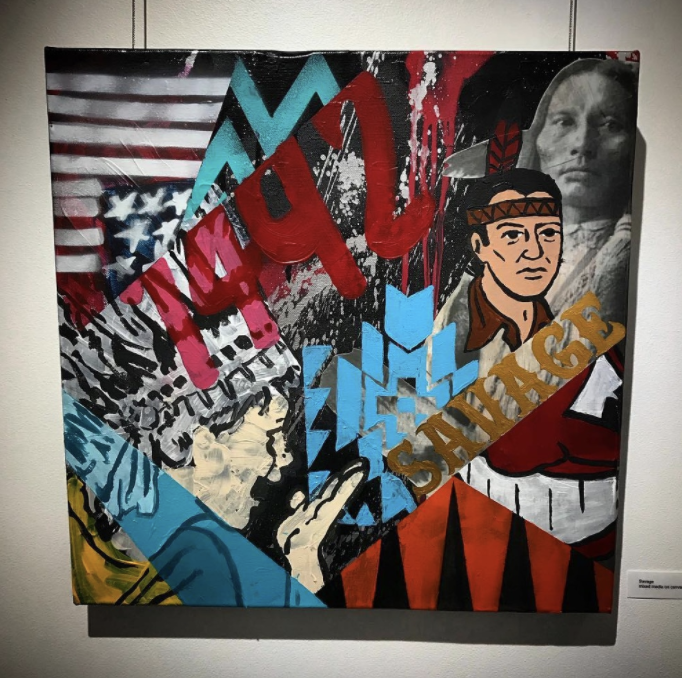
Overview
Deal has engaged with an array of subjects concerning Indigenous people as he continues to fight for their rights, values, as well as their identity, using art as his weapon. His unique method of spreading his word has had a great impact on the movement for Indigenous rights as it portrays a strong message that puts things in perspective. Through his art, Deal fights for Indigenous people, the original inhabitants of the US, as he uncovers how their communities have been wronged in the past and how it has transitioned to their discrimination today. His art, performances, and murals depict how the government has trespassed on the land of the Indigenous people, violated their rights, starved them of their ownership rights, discriminated against them, misrepresented them, and disrespected their beliefs and values. Gregg Deal’s contributions have been an eye-opener to countless people, and his perspective highlighted the wrongdoings of the US towards the rightful owners of this land, the Indigenous people.